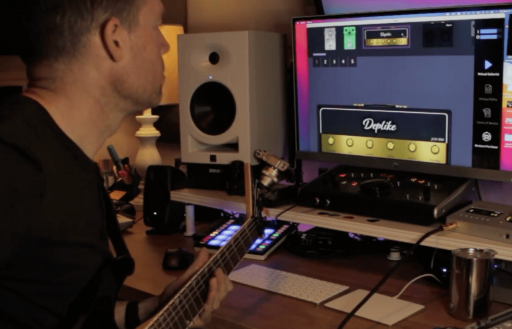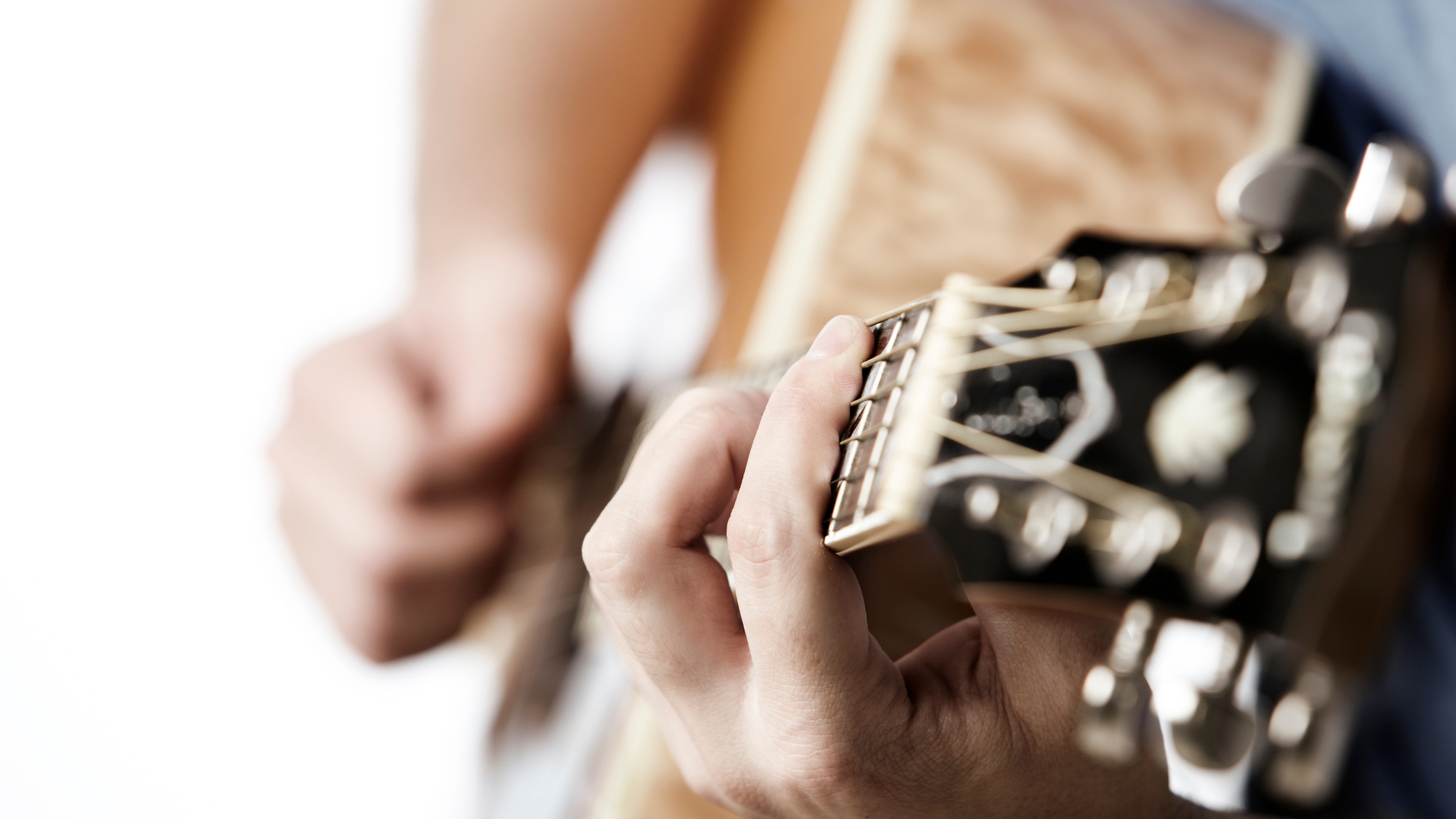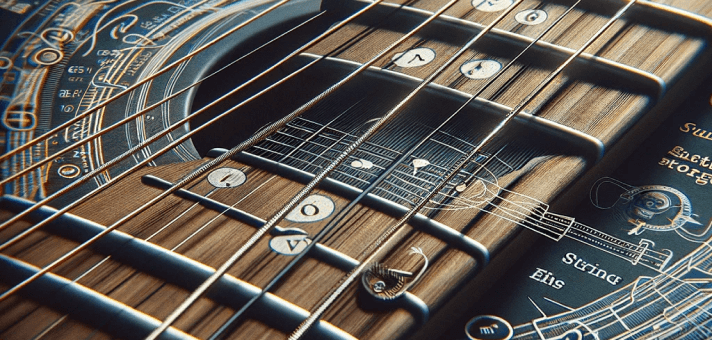Tips to Improve Your Barre Chords
All guitarists know that some chords can be incredibly effective if you know and practice them while playing guitar. Many of these essential chords are played in a technique called “barre.” F, Bm, Bb7, Abm7, or C# are the most powerful chords you can play with barre chords. Barre chords can be a frightening experience for almost anyone new to guitar playing. However, the reason for this is not that barre chords are terrible, but the techniques of new guitarists to learn these chords. Every new guitarist is looking for chords they can use as an alternative to barre chords. But once you learn barre chords, you can never do without them again. Now hold on tight! In this article, you’ll learn how to play barre chords more comfortably and play barre chords with a cleaner sound.
Barre chords are the easiest way to play multiple voices together on the guitar fretboard. Contrary to what was said above, saying “the easiest way” might sound weird. It can be pretty challenging and time-consuming to master barre chords at first. Most people avoid playing many songs just because they contain barre chords. Your fingers may have difficulty applying and maintaining pressure on the wires. Even if you have been playing the guitar for a long time, your fingers may get hurt and tired while playing barre chords. At this point, it means that you have not learned the proper technique.
You need to know two things: to practice an appropriate technique and increase your hand’s strength. When you want help from other guitar players, the only thing you are told is to “practice constantly.” This advice is tedious and useless advice when practiced with the wrong technique. But now we will see how to practice with the proper methods without being boring and play barre chords more efficiently and comfortably.
Before you get into the practice, you may need to know what barre chords are and what makes them so important?
The first chords you learn when you first start playing the guitar are probably the so-called “open chords” such as Am, E, or C. You can play these chords with the first three frets of your guitar fretboard; there is no need to close any frets. However, only a limited number of chords you can play with open chords, which hinders your fingerboard mastery from developing.
Of course, using the capo can be a solution to this as well, but sometimes you need to change chords very often, and I assume you don’t have a third arm to keep the capo moving while you’re playing your guitar! Therefore, learning barre chords without giving up is inevitable for playing the guitar no matter how hard you try. Playing barre chords will take your horizons to a universal level, allowing you to expand your guitar mastery and play all the tracks you want to play, even creating your music. So, let’s zoom in and do it!
How to Get Better at Barre Chords?
Tip 1. Be careful what kind of guitar you use and get the technical settings right. The type of guitar you have and the distance between the strings and the fingerboard are other factors that affect your playing a barre chord. It is easier to play barre chords on an electric guitar than a barre chord on an acoustic guitar. Because the strings are lighter than the acoustic guitar, the tension on the strings is much less than the acoustic guitar. If your guitar neck is out of tune and the distance between the strings and the fingerboard is wide, your guitar has a loud and erratic “action.”
In this case, it will be difficult for you to play a single note, let alone play a barre chord. Setting your string setting too high, it will be difficult for you to press the frets. If you set your string setting too low, there won’t be enough room for the strings to vibrate and make a sound. So, make sure your strings are tuned to sound the most accurate and comfortable for your guitar fingerboard. If you can’t arrange it yourself, get help from a professional, or you can get into trouble!
Tips to Improve Your Barre Chords; 2. Try using lighter strings
Most people are not aware of the string gauge in their guitars. People use the guitars as they are bought, and when they take the strings to be changed, they hand the guitar into the hands of the luthier without question. However, the gauge of your strings can also affect your distress when playing barre chords. String gauges of acoustic and electric guitars vary. Before deciding on this, it is helpful to try the string gauges and choose the one that suits you best. If you need to apply more force than necessary to press the strings, know that you need lighter strings.
Tip 3. Make sure your thumb is comfortably and correctly positioned
The use of the thumb is critical when playing the guitar. If you do not know how to use your thumb, you will likely experience pain and cramps, especially during long-term barre chord playing. Unfortunately, many guitar beginners keep their thumbs bent over their guitar neck, and fingerboard dominance is significantly reduced. Initially, your thumb should be placed vertically to the guitar neck. But hold on tight; there is a fine detail you need to use when playing barre chords. If you place your thumb to completely cover the guitar neck, you will have to bend your wrist too much. This is not good for your wrist health and prevents you from applying proper pressure to the strings. So, lowering your thumb roughly halfway at the back of the neck will increase the length of your other fingers and achieve maximum fret reach while playing barre chords.
Tip 4. Take control of your index finger
Many guitarists try to keep their index fingers straight while playing a barre chord. However, this is not a correct technique, and it will tire your finger seriously. The fleshy surface of the index finger makes it challenging to obtain a clean sound. On the other hand, strings can get between the joints, which leads to distortion of the voice. However, the edge of the index finger is bonier and not knuckled.
This gives your finger more power and control, allowing you to produce cleaner sounds with less pressure. In addition, by keeping your finger curved, you can create longer and cleaner sounds with less hand fatigue. But don’t forget! Your finger should still be vertical to the fingerboard. Keeping your finger is slightly curved isn’t something you’ll notice unless you see it carefully or someone has taught you to. Besides, keeping your index finger in a position on the edge of the fret, not in the middle of the fret, will relax you while using your other fingers. Doing all of these is the only technique that will allow you to progress, although it takes a lot of effort. Don’t give up, and go get what you want!
Tips to Improve Your Barre Chords; 5. Adjust your shoulder and elbow position well
As mentioned above, there are movements you need to do with your body to properly position your index finger on the keyboard. First, you should sit up straight and pull your shoulder back slightly. This move will activate your shoulders and arms. Your elbow should be close to your body and without any resistance to gravity; otherwise, it will be impossible to reach your hand towards the headstock with your arms open and tense. Complete your position by holding the barre chord you want to play. These movements will protect you from strain by distributing the tension in your hands and wrists to your arms and shoulders.
Tip 6. Do not bend your wrist and keep it as low as possible
This is perhaps the most crucial technique when playing barre chords. While playing the guitar, especially while standing, we often lose control and begin to bend our wrists unintentionally. This tires us out and makes playing barre chords even more challenging. You should keep your wrist as straight as possible. This is inevitable if you tilt the fingerboard towards you while playing the guitar. Understandably, you want to see your keyboard while playing, but our goal is to become professional, right?
Playing the guitar by bending your wrist is incredibly uncomfortable, especially when playing barre chords. I can’t imagine how it would hurt to play the guitar like this for a long time! That’s why you should hold the guitar neck like a sandwich that you don’t want to spill the ingredients inside. So how do we do these? Keep your guitar grip shoulder lower and closer to your elbow. Make sure you bend your hand too. This will reduce the bending and strain on your wrist.
Tips to Improve Your Barre Chords; 7. Never, ever try too hard
People who start playing the guitar believe they need to hold the guitar tight, but that doesn’t work. Lightening your guitar use and making less effort will accelerate your success. Focus carefully on the practice at this point. Of course, every barre chord has many alternatives. But do not perceive these alternatives as non-barre! For example, you can start by playing A Minor as one of the most common barre chord practices.
Because the leading tone of the A Minor chord is on the 5th string, which means you must stretch your index fingerless. Of course, you can play many barre chords on the 5th string, even by performing a half barre on the lower strings, not limited to the A note, for example, in B minor, which can be played with the 4th string. You may find that you can play many barre chords more simply by starting out this way! Of course, you need to set aside some time for this.
Tip 8. Dominate the main two strings
Learning the main sounds on the top strings, namely E and A strings, is perhaps one of the most essential techniques that will come in handy when playing barre chords on the entire fingerboard. Learning the notes on these two strings will allow you to quickly find the barre chord you want to play. Don’t worry, when you learn the main notes, you will find their place! You don’t need to learn sharps or flats.
Tip 9. Don’t prioritize your index finger
As we are used to with open chords, we try to first place our index finger on the fingerboard while playing barre chords. However, this is a widespread mistake. In barre chords, we must first place our 2nd, 3rd, and 4th, fingers on the fingerboard, opposite of open chords, and finally, close the strings with our index finger. Because placing our index finger first will make it difficult for us to position our other three fingers on the strings. This will cause the sound to be scratchy and produce a nasty noise. So better change the order and adjust the position of your other three fingers first.
Tip 10. Sorry to say that but be patient and practice constantly
Yes, we have adopted all the techniques and started to apply them, but what is that? What we wanted didn’t happen right away. Not right away! Learning barre chords and playing them well takes patience and skill. You need to strengthen your hand and learn the barre chords thoroughly. Of course, if you’re never going to play it perfectly, and believe me, if what you come up with is good, no one will expect you to play barre chords great. But whatever level you’re at, practice your barre chords regularly and make sure they sound right!
Of course, it will be difficult to learn barre chords and to play them properly when you learn them. But this article should have taught you what you need to do. So, better start practicing without wasting any time!
Now, how to get the guitar tone you want?
Advancing your way throughout the guitar journey is a wholistic process which includes two main pillars: 1. Improving your playing skills; 2. Tweaking the guitar effects and amps to shape your guitar sound.
We all have a guitarist idol that we dig the sound of, right?
Getting the guitar sound of your favorite guitarists/band can be very costly and frustrating. It can require years of expertise to achieve your desired guitar tone.
Don’t worry, you don’t actually have to spend that much money and effort to get any guitar tone you want. Deplike Guitar FX Amp Sim suite plug-in got you covered on all Windows, macOS, iOS and Android devices. All you have to do is plug your guitar and play!





